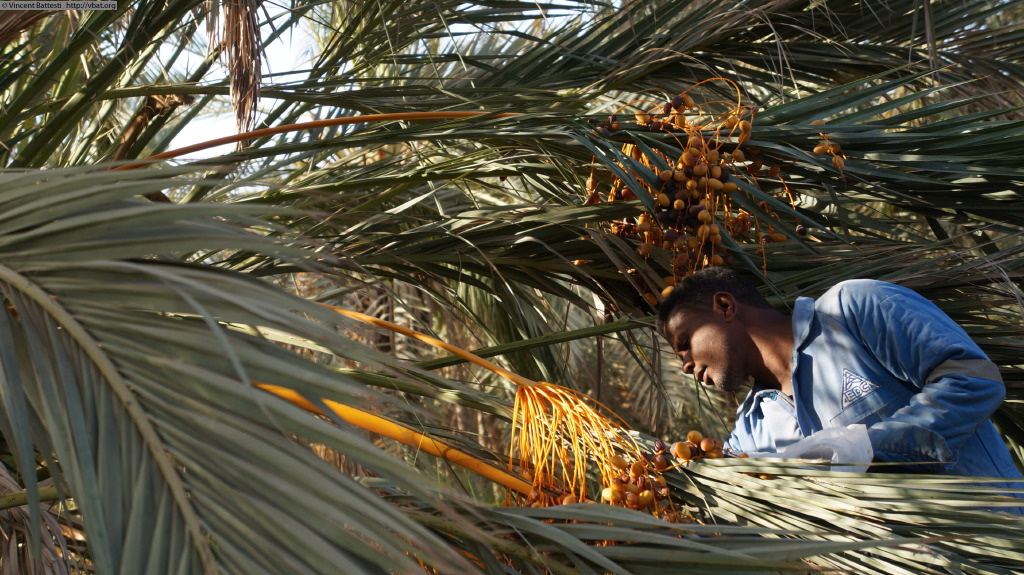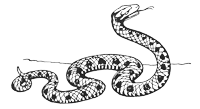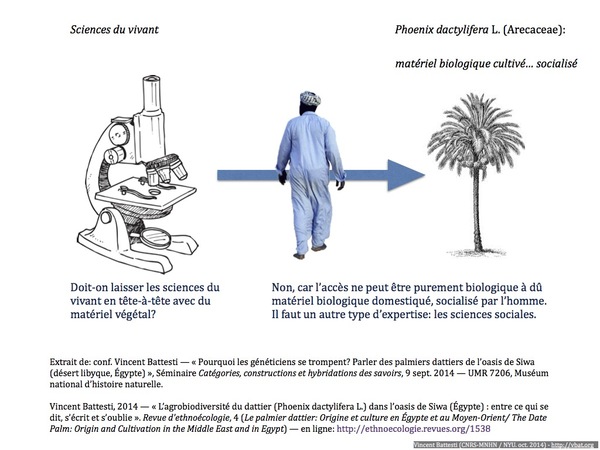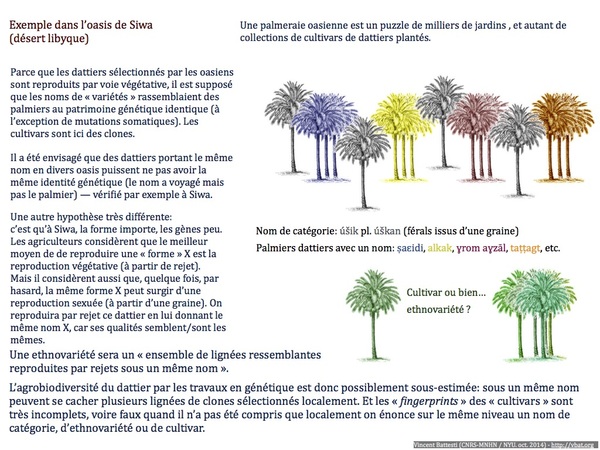Why geneticists make mistakes. Talking about the date palms of Siwa oasis (Libyan desert, Egypt)
Lecture (in French) October 2014
Lecture (in French) given for the Transversal Axis seminar « Catégories, constructions et hybridations des savoirs » (Categories, constructions and hybridizations of knowledge)
UMR 7206 Éco-anthropologie et ethnobiologie, Muséum national d’histore naturelle,
Paris, October 9th, 2014, 9:30am-12:30pm.
– Why geneticists make mistakes. Talking about the date palms of Siwa oasis (Libyan desert, Egypt)
– Original Tite: Pourquoi les généticiens se trompent. Parler des palmiers dattiers de l’oasis de Siwa (désert libyque, Égypte)
[A somewhat provocative title to invite researchers from the Museum who use genetic techniques in their work.]
– In a few words:
The humanities and in particular ethnobotany, ethnoecology or (social) anthropology are essential and undipensable even for something as trivial as estimating the biodiversity of date palms in an oasis. An interdisciplinary approach save time/money for research.
I’m talking about saving time/money, and it’s not just a figure of speech: genetic analysis has its material and analysis costs, but anthropology has its methods that require time to collect and analyze data, which is also not to be neglected.
So, it costs, but why can’t an interdisciplinary approach be spared? Quite simply, because we can’t leave geneticists alone with palm trees. If what is sought is the diversity of the date palm, then sampling and analysis will be carried out. But rather than diversity, we should talk about “agrobiodiversity”. Palms in Siwa are not a natural population (actually, we don’t know of any), but a population regulated to a very large extent by humans.
The geneticists evoked here are at least partly aware of the cultivated aspect of the date palm, because, not being able to multiply the extractions and the number of sequencing plates to infinity (it costs time and money), :
- they did not randomly sample the population of xxx thousand individuals of Phoenix dactylifera L. in Siwa,
- they relied on the local categorization of date palms to make and name their samplings.
Unfortunately, there is no correspondence between the (scholarly) categories of geneticists—such as cultivar—and the local categories they have collected in part to name their “cultivars”.
In scientific works, especially those testing intra-varietal variations, no reference is ever made to the cultural implications that this may have, because: either 1/ the varieties are clones as expected, because the official technique, known in any case, of reproduction of date palms is cloning, or 2/ against all expectations, there are variations, due either to somatic mutations or to a heterodox cultural mode.
In my very broad bibliographical research (...) on date palm varieties (in the hope of disentangling current agrobiodiversity and its evolution) and the resulting accumulation of contradictory data, I hoped as a salvation plan the work of scientific colleagues who are experts in the field of life sciences. In the end, it will be up to the social sciences to correct their data.
– This conference is largely based on a published article, The agrobiodiversity of the Date Palm (Phoenix dactylifera L.) in Siwa Oasis (Egypt): between what is said, written, and forgotten, and work in progress, Date palm agrobiodiversity (Phoenix dactylifera L.) in Siwa oasis, Egypt: combining ethnography, morphometry, and genetics.

- Siwa (Égypte), le 4 décembre 2013
[20131204155805-vbat]


 vbat.org
vbat.org





